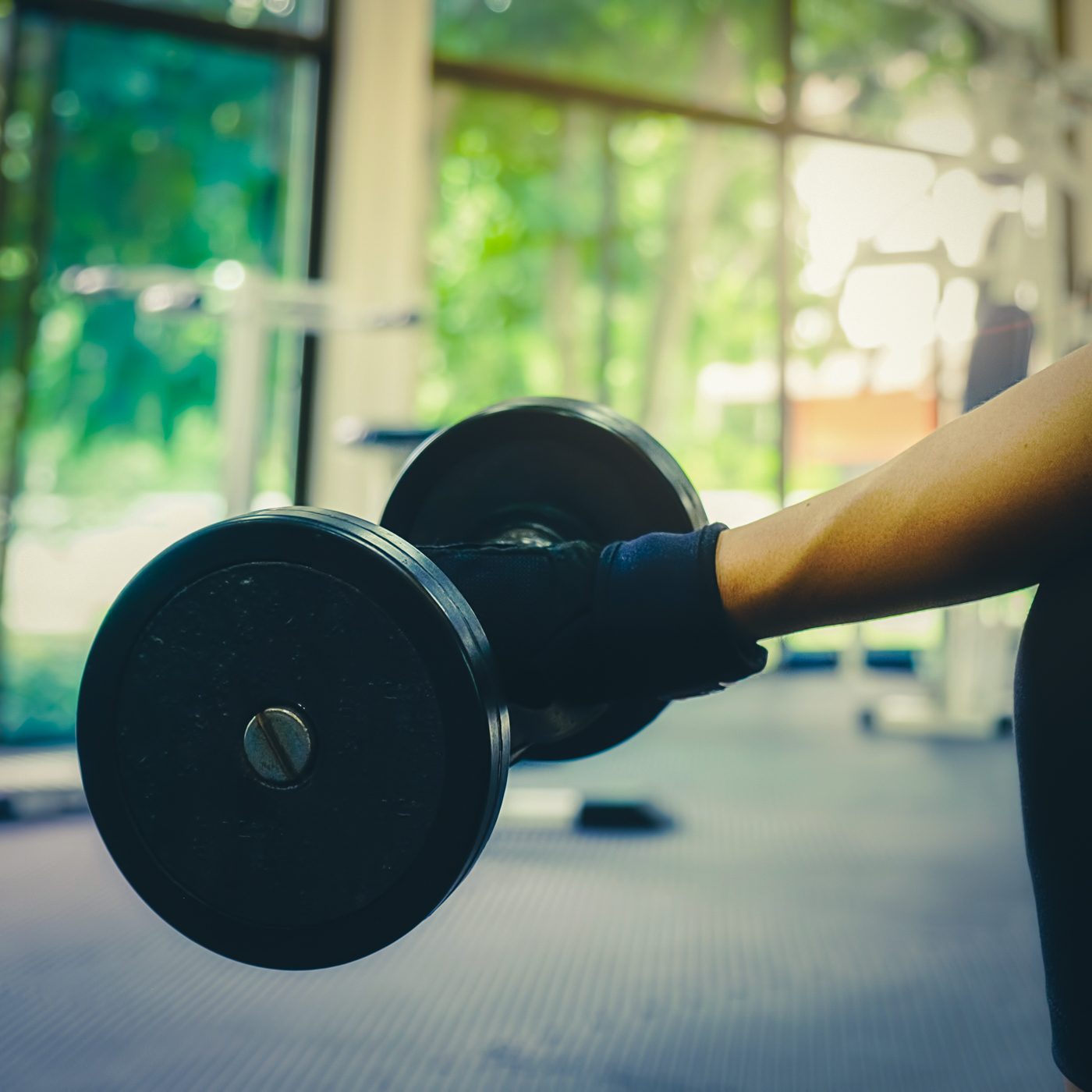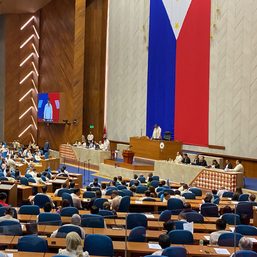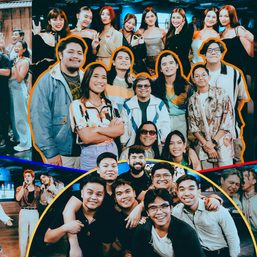SUMMARY
This is AI generated summarization, which may have errors. For context, always refer to the full article.

AT A GLANCE
- Gyms will always be there but the coronavirus has already changed the way exercise is being done
- Dumbbells have become a ‘necessity’ as fitness enthusiast set up their own home gyms
- There’s a growing marriage of physical and online fitness
- New breed of instructors emerge
With gyms starting to reopen and our favorite studios launching online programs here and there, Filipino fitness enthusiasts are trying to imagine the future of the industry post-pandemic.
Even with a vaccine, the coronavirus has already changed the way exercise is being done as health and safety have become everyone’s top priority. (LIST: Gift ideas for fitness-loving friends)
Although other countries have started to ease back to the pre-pandemic normal, gym and exercise studio owners in the Philippines acknowledge they need to take a different approach. They need to find their own unique solutions to cope with the country’s health crisis based on how the government is managing it.
“Right now we are definitely in a very, very different situation from other countries,” says Electric Studio CEO Kris Sy.
“Every country has been different, and we so far are the ones that [haven’t really opened]. But I’m hoping that what’s happening to them is a preview of what’s to come for fitness here as well.”
Despite the uphill climb for the Philippines, these major players in the fitness industry believe that it will continue to flourish in a different way.
Gyms will always be there
“It will come back stronger,” Gold’s Gym CEO Mylene Dayrit confidently says on the future of gyms in the Philippines.
Gyms took their first step into the new normal when the government allowed non-contact sports gyms to operate in general community quarantine starting September 1.
Now, they will contribute to the campaign to strengthen people’s immunity through exercise during the pandemic.
“There will be more and more people who would be interested to increase their stamina, their strength and boost their immunity and a lot of other things by really going to the gym,” explained Dayrit.
In a time where mental health has become one of the primary topics of discussion in the wellness sector due to the isolation brought about by COVID-19, the reopening of gyms can open doors for social support, given that they follow proper health protocols.
“Because in the gym, aside from the facilities and the professional team that can guide you properly, the gym setup is really known for the community of like-minded members and fitness professionals for social support.”
The gym business was severely affected by the coronavirus pandemic as the Inter-Agency Task Force initially announced that gyms, fitness studios and sports facilities were not allowed to open in areas under enhanced community quarantine to general community quarantine.
Gyms have been recording negative income during the course of the lockdown, while expecting to invest more on health and safety protocols.
“It was like a death sentence,” described Dayrit.
Together with other top gym CEOs such as Mark Ellis of Fitness First and Celebrity Fitness, Desiree Moy of Slimmers World and Rey Bolivar of Anytime Fitness Asia, they formed a coalition to appeal to the Department of Trade and Industry on the reopening of gyms.
For contact sport gyms like Elorde, coach Garren Elorde believes that the country’s love for boxing will boost its return.
“I don’t think that boxing is going to go away. I don’t think combat sport is going to go away. I think it’s impossible for them to go away because the fanbase of combat sports is different,” said Elorde in a mix of English and Filipino.
“There is more hype now like the NBA because people didn’t think it was going to push through again, but they found a way to go back.”
Sy is also confident that group fitness classes will remain, and she is already starting to prepare for how they will be held in accordance with safety protocols.
“It’s definitely harder to breathe [with a mask] because in Electric, you’re doing cardio, you have to be like breathing in a lot. In other countries, some of them wear masks, some of them don’t,” said Sy.
“We also have to think if we need to put physical barriers in the bike room, so that droplets will not spread, so either the cycling or the group workout-specific things, we all have to them figure out when the time comes.”
Electric Studio’s CEO also emphasized, though, that gyms will only return when Filipinos will have confidence in the government first before building their trust with the studio for communicating and executing these protocols.
“I think if you have both the outside factors going your way and then building the trust of the studio, I think that’s the perfect combination of getting things back to normal,” said Sy.
“Even if I put all of these amazing bells and whistles in place with the latest technologies to ensure that everything’s safe, if people in general don’t feel safe because these cases are going up, it’s still not gonna work.”
‘The dumbbell is the new tissue paper’
One of the most puzzling things that happened during the pandemic was when panic buyers in the US emptied shelves of tissue paper.
According to Coaches’ Lab’s Dimple Pelaez, that was the same situation in the Philippines but with dumbbells and kettlebells, as regular gym goers rushed to set up their own home gyms. (Adulting 101: How to set up a home gym)
“May isang line nga na nagsasabi na sa podcast namin na ‘the dumbbell is the new tissue paper’. So ‘yung demand ng fitness equipment is high enough na parang yung supplies,” said Pelaez.
“Mas marami mag-iinvest na for home gyms, or home fitness areas. They will buy more equipment, they will rely more on online content in terms of fitness kasi dahil nga sarado pa yung mga gym, and at the same time mas nagboboom yung mga materials, mga online materials about fitness, mas nagboom siya ngayon.”
(There was a line in our podcast where we said ‘the dumbbell is the new tissue paper,’ so the demand of fitness equipment is high enough to be considered as a supply. More people are investing in home gyms or home fitness areas. They will buy more equipment, they will rely more on online fitness content because the gyms are still closed, and at the same time, there is a boom in online fitness materials.)
Coaches’ Lab was started by former coaches in the now-defunct circuit training gym chain 360 Fitness.
Although it was supposed to have its own brick and mortar gym, the pandemic delayed its opening, and it has since shifted to an online platform. It offers group workout classes like Pelaez’ kettlebell class, and personal one-on-one sessions.
In just 6 months, Coaches’ Lab was able to gain 80 to 100 regular members, who are mostly their loyal clients from 360 fitness.
“We’re lucky na ‘yung connections namin or yung clientele namin before we started the Coaches’ Lab, is naestablish na namin yung bond or yung relationship, mas naging madali yung transition,” said Pelaez.
(We’re lucky that our connections and clientele were established before we started Coaches’ Lab, so the bond or the relationship is there and the transition was smoother.)
For Pelaez, the convenience of having a coach to guide you all the way when working out from home has been the selling point of their start-up.
“In terms of reception, okay naman parang pina-priority nila yung convenience. ‘Tsaka ‘yung quality ng classes compared to other online classes, mas focused kami sa coaching part. Instead of us working out with them, we just try to focus on teaching them how to do [the exercises],” explained Pelaez.
(In terms of reception, the clients prioritized convenience and the quality of our classes, compared to other online classes, is more focused in the coaching part. Instead of us working out with them, we just try to focus on teaching them how to do the exercises.)
Marriage of physical and online
After being in isolation for many months, it is predicted that people would want to meet their friends and do activities together post-pandemic.
But the convenience of online platforms will also be giving fitness enthusiasts options to work out from anywhere and anytime.
“I think a lot of people will do both. I think there’s going to be like a marriage of working out at home and working out in a physical studio,” said Sy.
“There are pros for both. For the physical, we are social beings, right? There’s still the magic of seeing your friends, there’s still that magic of like being next to your friend and accomplishing a class together. I think that will never go away, that yearning will never go away.”
”But the beauty of complementing it with online is let’s say you had a crazy day at work and you didn’t get to go to the studio, [you] have the option of doing it online.”
Sy mentioned that online workouts have helped people who are scared of the gym or are “gym-timidated” feel more at ease at home. It also helps families bond as multiple members in a household share a screen during a Zoom training session.
“We’re starting to see people who were scared, or who were gym-timidated with going in the studio and now they’re working out at home, and they’re just like: ‘Hey, no one can see me. I’m going to work out now,’” recalled Sy.
“It’s super nice seeing families working out together. Sometimes on Zoom, we see more than one person behind the camera and we find that so cute.”
The forced adaptation to working out online has also opened doors to trying multiple workout programs at the same time.
Even though Electric Studio’s flagship product is group spinning classes, the company launched Electric On Demand, which allows their instructors to share other forms of exercises they specialize in off the bike.
“Electric now will no longer just be known for cycling, it’s going to be known as a boutique fitness studio. All these types of workouts for your cross-training, could be purely within the electric ecosystem,” added Sy.
And of course, with the endless possibilities of the online world, gyms and fitness studios can expand their market to other countries, while Filipinos train with foreign-based instructors.
“We have people from London working out, people from Singapore working out, and that’s the beauty of online – it’s like anyone can join.”
New breed of instructors
Now that social distancing is the best way to combat COVID-19, instructors are now forced to face the camera and give out coaching calls properly to prevent their clients from getting injured.
These leaders in the fitness industry believe that these new skills will be of top consideration for aspiring instructors in the future.
But these new “social skills” picked up from the pandemic are easier said than done.
“Teaching in front of a camera is very different, like there’s that whole camera shyness that you have to get through, which is something they (the instructors) never had to deal with before,” said Sy.
“So how you interact with a camera and how you interact with the audience is very, very different online. If we were to get new instructors, it’s a whole new different thing – how do you teach online classes effectively and how do you have that camera presence. That’s something we’ll be looking for now.”
Thankfully, Gold’s Gym has already laid out an education plan to help aspiring instructors transition to full-time or part-time coaching through their fitness institute.
Before the pandemic, Gold’s Gym was offering the Fitness Instructors Course, which would run on Sundays for 143 hours, including a practicum in the gym chain.
According to Dayrit, the courses have already emphasized how to coach online, and it will soon be making a push to become a postgraduate course in top universities in the Philippines.
“In fact, there was also a time when we collaborated with the DLSU professional school in Makati and we were offering postgraduate courses. The vision was really to train athletes and former sports coaches and make them transition to either become a gym manager or a gym coach,” explained Dayrit. – Rappler.com
Add a comment
How does this make you feel?





There are no comments yet. Add your comment to start the conversation.